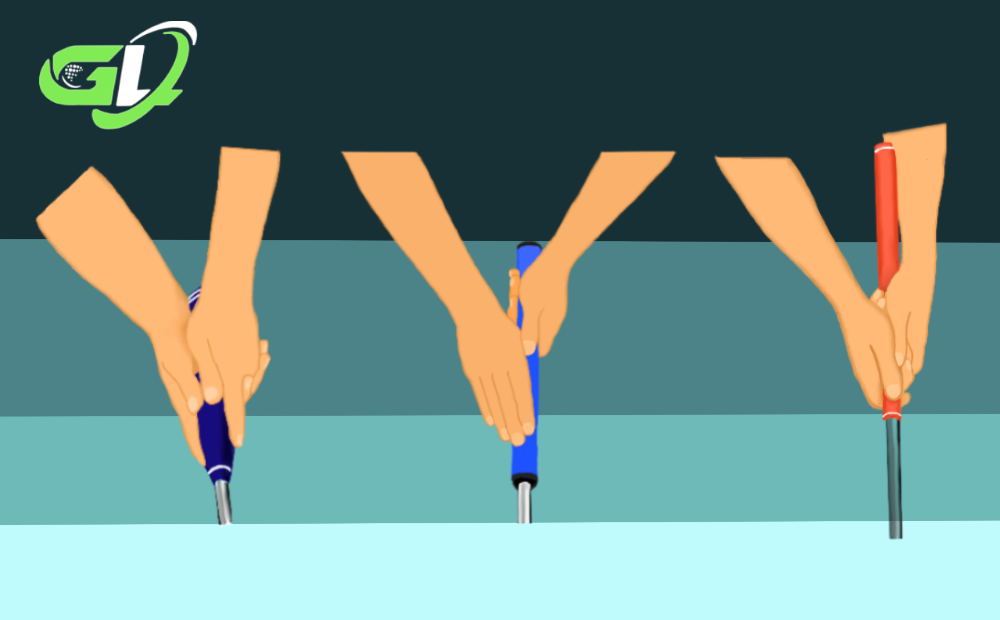
It’s undoubtedly that putting is the most important element when it comes to lowering your golf score. As golfers, we know how pointless it is to be amazing with your driver and irons just to struggle with one putting a 5-footer. By then, your chances of reaching a mid-handicap or even scoring close to a 90 are slim.
That said, if you’re looking to become a good golfer, you’ll need to learn how to putt properly and have the confidence to attack the greens consistently. To set yourself on the right path, you’ll first need to learn how to grip a putter.
Of course, when it comes to the putter grip, it is very personal and by far the most subjective aspect of gripping a golf club when it comes to golf (as we will learn, the putting grip is completely different from how we would grip our irons or driver). Regardless, the objective with any putting style is to promote a smooth, wrist-free stroke that always finds the center of the putter face. That way, your golf ball can actually roll instead of skid or slide through the greens.
How to grip a Putter: The Reverse Overlap
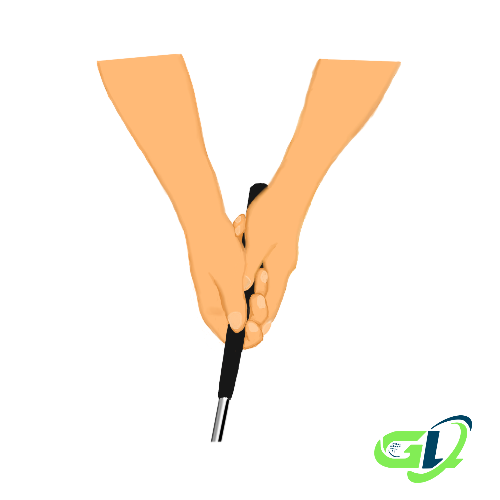
The reverse overlap grip is the most popular putter grip around and has been used and taught by golf coaches for a very long time due to its simplicity.
In this grip, take your regular overlap/ vardon golf grip like you would with your irons. From there, simply transition by taking the forefinger/ index finger of your left hand and sit it on top of the fingers of your right hand. Make sure both your thumbs point downward and sit on the flat top of the grip, and that’s it!
The benefit of the reverse overlap grip is that it’s comfortable and familiar right from the start. It also eliminates any wrist action, which is a common mistake in putting by amateurs, making it easier for you to have more of a wrist-free stroke.
Suitable for, but not limited to, thinner putter grips.
Used by: Tiger Woods
Alternative Reverse Overlap
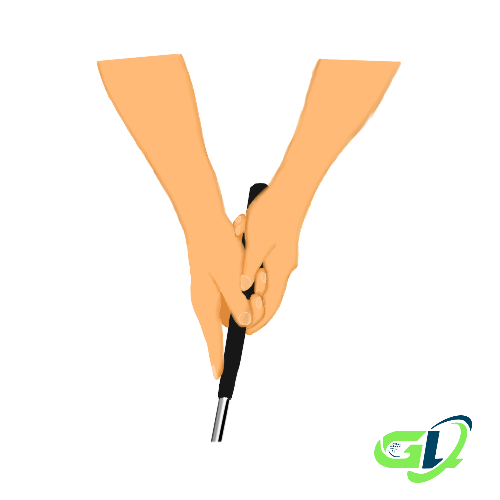
For some, the reverse overlap isn’t enough to remove their wrist action and still doesn’t feel firm enough throughout the stroke. If that’s the case, go ahead and try the alternative reverse overlap grip.
To do this, simply transition from the reverse overlap grip by extending the forefinger of your right hand. Therefore, instead of your index finger wrapping around the grip, sit it on the right side of the putter grip. Doing so removes even more wrist movement for some golfers.
Personally, this is my favorite grip.
Suitable for, but not limited to, thinner putter grips.
Used by: Brooks Koepka
The Claw Grip
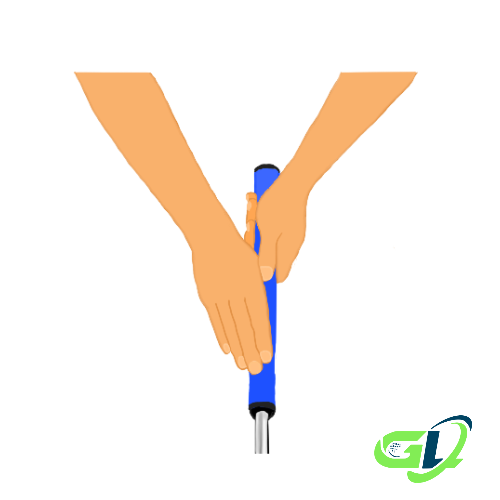
Emerged around 25 years ago, the claw grip slowly embedded its way into golf’s mainstream putting technique when four of the 24 players in the 2018 Ryder Cup used the claw – Justine Rose, Tommy Fleetwood, Sergio Garcia, and Webb Simpson.
The claw features a right hand that does not overlap with the left hand. To achieve the claw grip, first, align your lead hand with the putter and place the putter in the palms of that hand. From there, wrap your fingers around the grip and sit the thumb along the upper, flat surface of the handle with the back of your lead hand facing the hole.
After that, add your trail hand with the palm facing the ground. Split your thumb and forefingers and rest the lower half of the putter grip in the notch between both fingers. This establishes that claw-like pinch with your thumb and forefinger and reduces the activeness of your right hand during your stroke.
This putting style is great for those who use too much wrist action with their dominant hand (right hand for right handed golfers) as it puts the power hand into a more passive position throughout your stroke.
Suitable for, but not limited to, fatter putter grips.
Used by: Tommy Fleetwood
The Pencil Grip
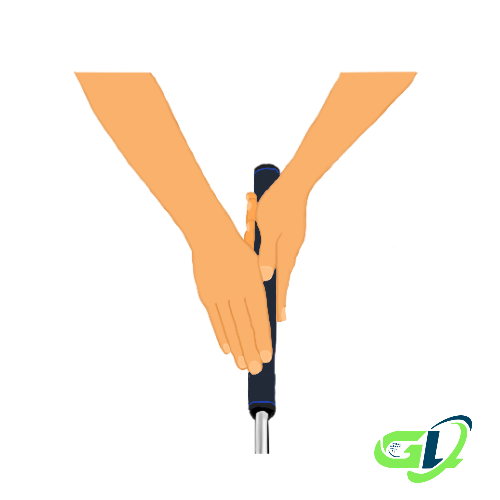
This pencil grip is a slight alternative to the claw grip. To achieve this, simply transition from the claw grip by taking the forefinger of your left hand and placing it on the left side of the putter.
This grip allows golfers to use the left arm more allowing it to feel like you’re ‘guiding’ the stroke with your lead arm for better accuracy.
Suitable for, but not limited to, fatter putter grips.
Used by: Phil Mickelson
Two Thumbs
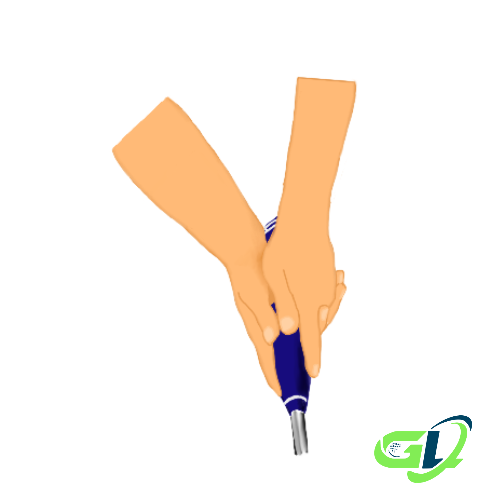
The two thumbs grip starts with both palms facing each other while holding onto a fatter putter grip. Both thumbs will rest side-by-side, and parallel one another, on the top flat surface of the grip. From there, sit both your forefingers on their side of the putter, opposite one another. Lastly, with the rest of your fingers, simply wrap them around one another while having the rest of the grip snugged in your palms.
This grip creates a more symmetrical, even-leveled stance throughout your entire putting stance. As a result, it creates an ideal pendulum-like swing.
Suitable for fatter putter grips.
Used by: Matt Wallace
Left Below Right/ Left Hand Low
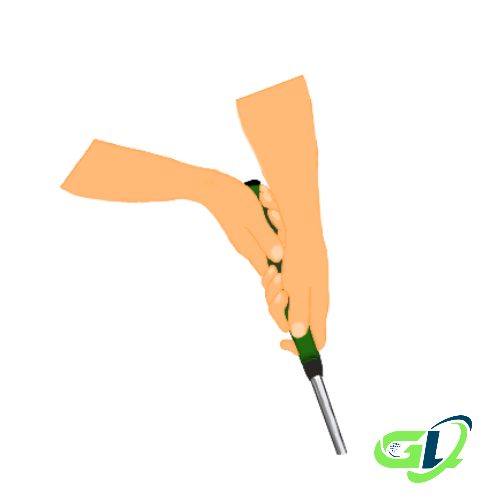
The left below right sounds exactly like what it is where right handed golfers prefer to have their left hand placed lower than the right hand instead of the traditional right below left grip style.
Starting with your left hand, grip the lower part of the grip with a relatively weak position. This is to allow the putter grip to press onto your left wrist while your left wrist becomes slightly bowed, reducing wrist action throughout the stroke. Then, place your right hand on the upper half of the grip, with your right hand in a stronger grip position and directly opposite of your left hand.
This is the go-to gripping style for those who have too much wrist action with their dominant arm during their putts but still prefer a grip similar to the Reverse Overlap.
You may feel a little more bent over than usual with this grip, but it’s perfectly natural
Suitable for any grip type.
Used by: Jordan Spieth
Armlock Grip
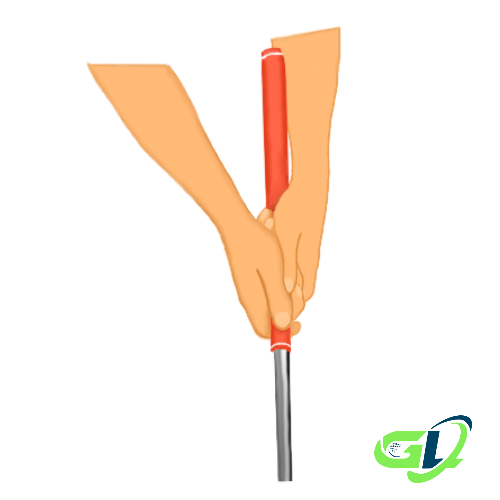
Recently popularized by Bryson DeChambeau, this unique putting style consists of a left below right foundation where the putter grip is pressed on the forearms of your lead arm.
Following off of this depiction, ensure your left arm is extended with the left arm grabbing the lower end of the putter grip while the butt of the grip does not extend past your elbow joint.
With your right hand, gently grasp the putter anywhere that’s comfortable for you. In the image, you may see how Bryson DeChambeau prefers it, with his right hand over his left, but there are many cases where golfers also prefer to keep both hands separate by placing their right hand on the upper half of the grip.
During the putt, the left arm controls/ is dominant throughout the entire stroke while preventing any wrist action from your right hand.
This putting style naturally de-lofts the face, therefore, it’s common to position the ball more towards your lead foot. If you’re placing the ball in the center of your stance, adjust the putter accordingly so that the face isn’t facing downwards.
Suitable for longer-than-standard putters.
Used by: Bryson DeChambeau
Two Quick Ways to Improve Your Putting
Improve Your Putting Stroke and Alignment With Training Aids
Knowing how to grip the golf club is one thing, but learning how to putt properly is another. Most mistakes we see when it comes to putting is something as simple as face alignment and the way we swing the putter.
We normally notice if we aren’t swinging the putter correctly, but we don’t always notice if our putting alignment with the golf ball is off! In such instances, no matter how brilliant your putting stroker is, you’ll always miss your intended aim.
If you’ve noticed this issue with your putting, you can consider implementing useful putting aids like Back2Basics’ Pro Path Putting Mirror into your practices. These putting aids will teach you to putt with the proper alignment and correct your putting stroke with easy-to-follow grids that are printed on the mirror. For most golfers, they’ll be surprised how much they’ve misinterpreted the right way to putt right when they use the putting mirror.
Learn to Read the Grain
When it comes to putting, we often ignore the importance of grain. It may seem complicated but it’s actually not.
So, what is grain? To keep it simple, grain is just the direction the grass is growing. When it comes to the green, the grass is affected by the direction of the sun and by how water runs off of the greens.
To read the grain, look at the difference in color intensity when standing behind the golf ball (lining up towards the hole/ intended target) and standing in front of the golf ball (lining yourself up where the hole is closer to you than the golf ball itself).
If the grass is lighter/ brighter in color when standing behind the ball as compared to a darker color when standing in front, then we can say the grain is with you when we’re putting towards the green. To put it simply, this means you can expect the golf ball to go faster than you’d expect. This will be the opposite if the grain is darker when standing behind the ball, where you’ll be putting against the grain (a.k.a slower).
You can also determine how you ball will react as it rolls closer to the hole by looking at the hole itself. If you look at the hole you’ll notice that one side of the edge is browner than the other side. That’s because the grass is leaning/pointing over with the roots exposed (hence the brown). In that case, if it’s brown from 1 to 4 o’clock then the grain is going to the right. If it’s brown at 6 o’clock, then the grain will be against you.
Final Thoughts
To close, you should never underestimate putting. We see too many golfers ignoring putting techniques believing it’s just a simple tap on the ball. How hard can it be? Yet, it’s ironically the most technical and important aspect to master in golf.
By now, we assume you’ve tried all the putting grips we’ve mentioned in this post. Now, go practice! Try it out on a green nearby, whether that’s at the golf range or the golf course.
Remember, do what feels best for you. At the end of the day, you should be settling with a putting style that removes your wrist from manipulating the club while allowing you to consistently hit the ball center of the face.
If you’re new to golf and don’t have a putter in hand, check out the putters we recommend for any beginner or high handicapper. Good luck!

